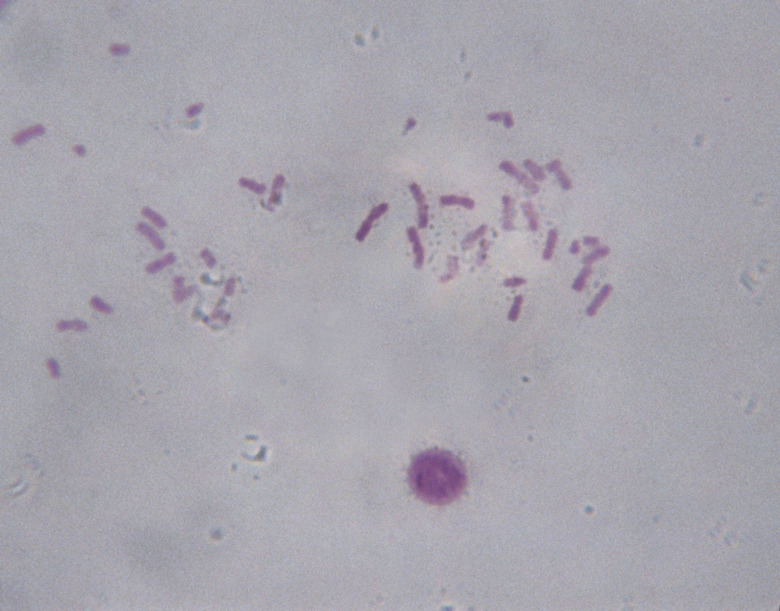Which Cell Organelle Stores DNA And Synthesizes RNA?
The cell is the basic unit of life that is responsible for the structure and function of every organism.
The information that dictates these structures and functions resides in deoxyribonucleic acid (DNA), which is stored within the nucleus of the cell. Ribonucleic acid (RNA) is a type of "copy" of a DNA sequence made in the nucleus for carrying out these instructions.
Inside the Nucleus
Inside the Nucleus
The _nucleus_ is the control center of the cell and is where chromosomes are located. Chromosomes are made of proteins and coils of DNA. The DNA molecules are organized on genes, which are inherited from both parents.
The name for the collection of DNA in the nucleus of eukaryotic cells is chromatin. Chromatin is composed of DNA and protein. Within the a chromosome, a densely packed string of DNA is coiled around protein molecules called histones. The histones provide structure to the string, which allows a vast amount of DNA to be compacted into a tiny chromatin package.
The nucleolus is located inside the nucleus: an organelle within an organelle with a specialized function. The nucleolus of the cell contains the components for making ribosomes and is responsible for manufacturing these organelles. Ribosomes are the organelles that synthesize proteins.
DNA Structure and Function
DNA Structure and Function
All the genetic information about an individual resides in a molecule of DNA. The code for this vast amount of data is spelled out by the arrangement of four chemical bases: adenine, guanine, cytosine and thymine. Pairs of bases are linked together and framed by a sugar molecule and a phosphate molecule to form a nucleotide. Nucleotides in a series form the spiraling, ladder-shaped molecule of DNA.
DNA is the master copy for the instructions of all cellular information. For cellular functions to be carried out, the cell must transcribe, or make copies, of the instructions for a specific function based on the sequence of nucleotide bases. These copied sets are molecules of RNA.
RNA Synthesis: Copying DNA Sequences
RNA Synthesis: Copying DNA Sequences
The nucleus is where the RNA components of a eukaryotic cell are synthesized, or transcribed. During the transcription process, an enzyme called RNA polymerase unwinds a section of DNA. The nucleotide sequence in the single strand of DNA is copied to form a strand of RNA.
There are three different types of RNA than can be synthesized during transcription: **messenger RNA (mRNA)**, **transfer RNA (tRNA)** and **ribosomal RNA (rRNA)**. Different RNA polymerase enzymes are responsible for making different types of RNA,
The structure of ribosomes is made up of ribosomal RNA. Ribosomes are the site where proteins are synthesized by using mRNA and tRNA. Specific genes contain the DNA sequences for coding proteins. These genes produce mRNA copies that contain the code for synthesizing proteins.
Proteins are biological messengers that have important functions in the body, such as enzymes and hormones. Proteins are formed from amino acids. Transfer RNA (tRNA) brings the amino acids to the mRNA so they can link with the nucleotides in the mRNA.
Ribosomes and Protein Synthesis
Ribosomes and Protein Synthesis
Ribosomes are the site of protein synthesis in cells. They are mainly located on the endoplasmic reticulum, which lies adjacent to the nucleus and on the membrane that surrounds the nucleus called the nuclear envelope. Composed mainly of rRNA and proteins, ribosomes use mRNA and tRNA to build proteins from amino acids. The mRNA provides the instructions, and the tRNA lines up the amino acids.
After protein synthesis, proteins leave the ribosomes for transport to the Golgi apparatus. Sorting and modification of proteins is an important function of the Golgi apparatus in eukaryotic cells.
References
- UMass Medical School: What Is RNA?
- National Human Genome Research Institute: Deoxyribonucleic Acid (DNA) Fact Sheet
- National Human Genome Research Institute: Transcriptome Fact Sheet
- Florida State University: Molecular Expressions: The Cell Nucleus
- Florida State University: Molecular Expression: Ribosomes
- Florida State University: Molecular Expressions: Chromatin and Chromosomes
Cite This Article
MLA
Mentzer, A.P.. "Which Cell Organelle Stores DNA And Synthesizes RNA?" sciencing.com, https://www.sciencing.com/cell-organelle-stores-dna-synthesizes-rna-2655/. 31 July 2019.
APA
Mentzer, A.P.. (2019, July 31). Which Cell Organelle Stores DNA And Synthesizes RNA?. sciencing.com. Retrieved from https://www.sciencing.com/cell-organelle-stores-dna-synthesizes-rna-2655/
Chicago
Mentzer, A.P.. Which Cell Organelle Stores DNA And Synthesizes RNA? last modified March 24, 2022. https://www.sciencing.com/cell-organelle-stores-dna-synthesizes-rna-2655/
